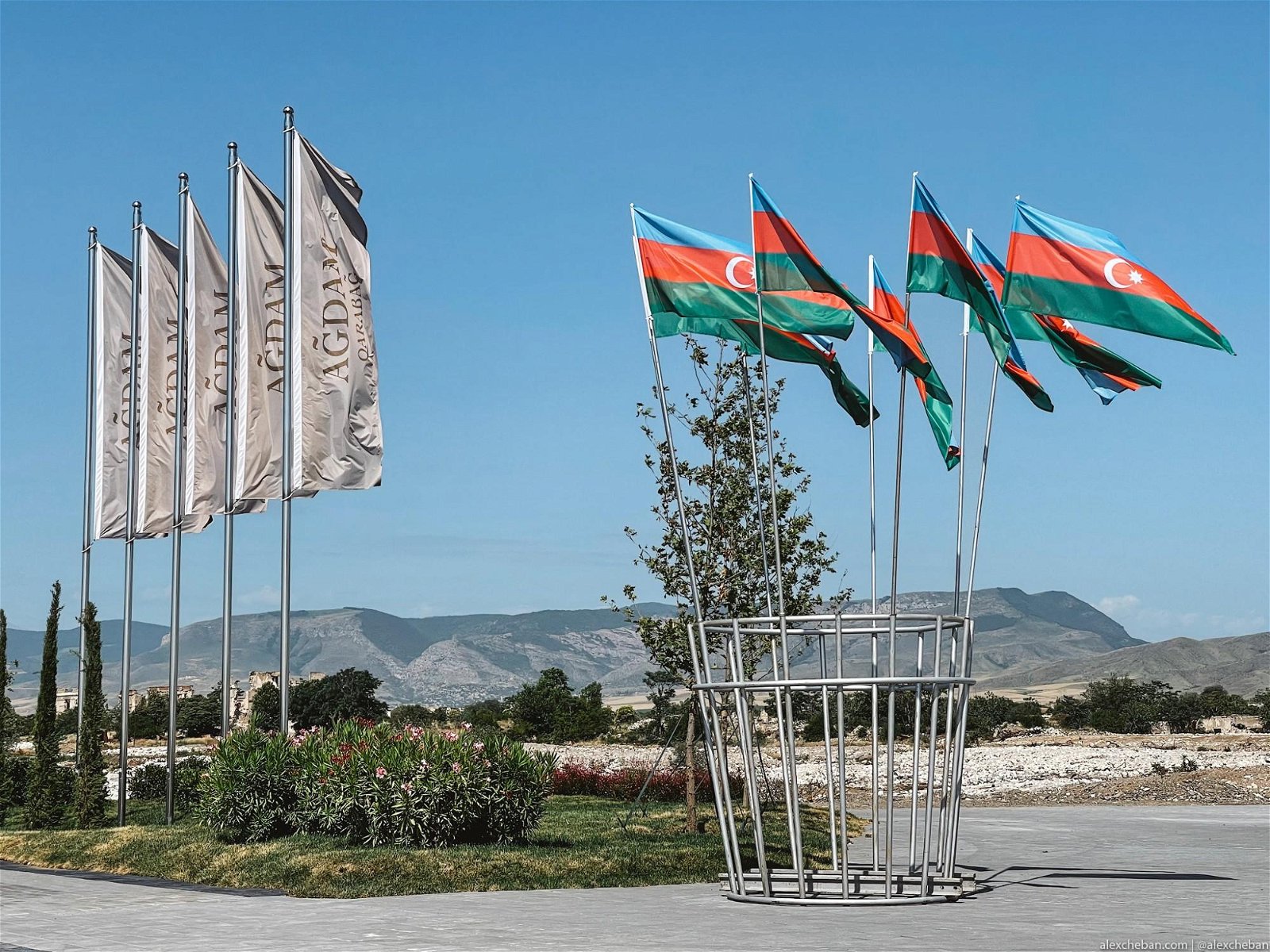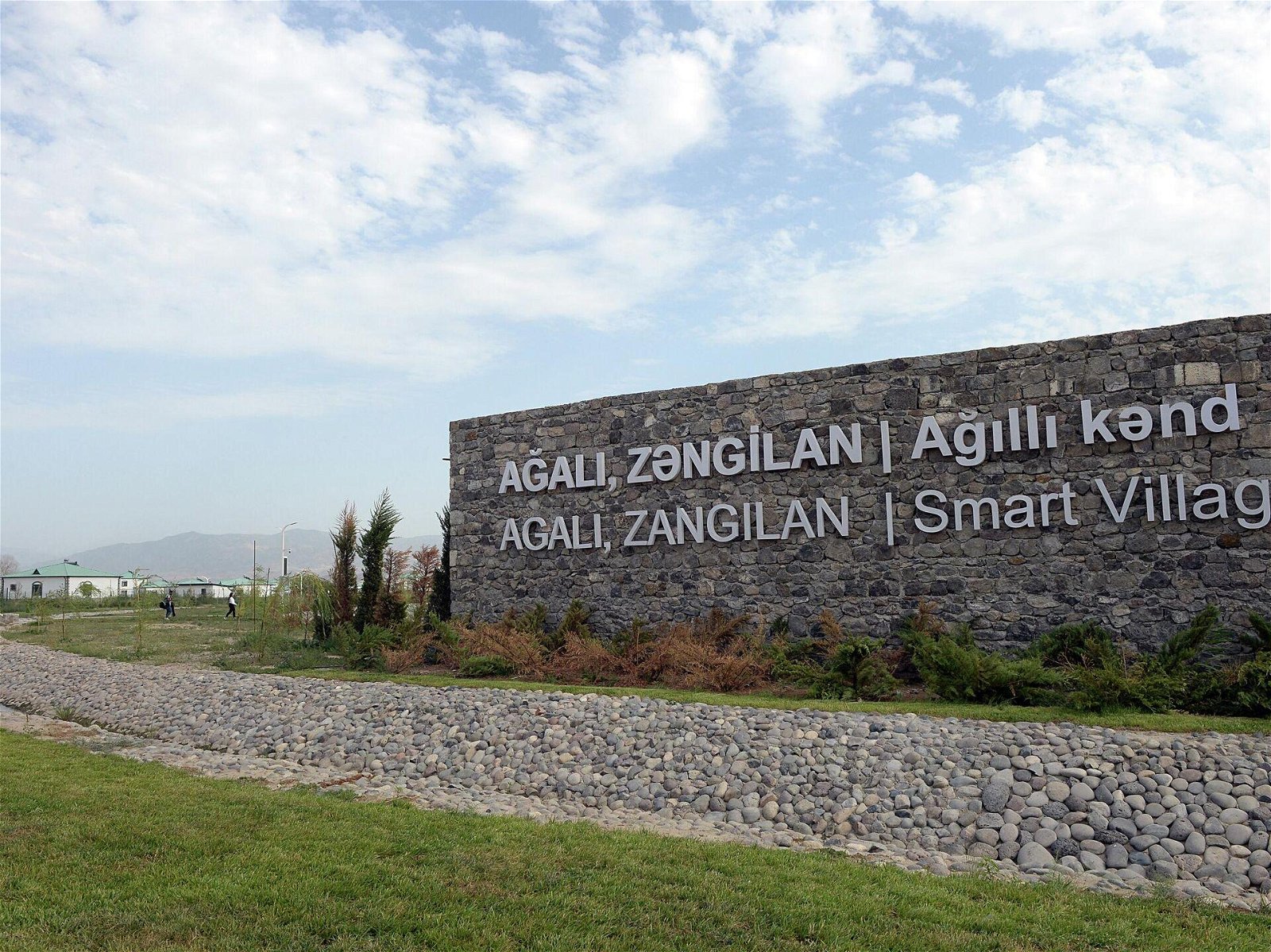Azerbaijan kicks off "Great Return" to Karabakh Review by Caliber.Az
For the third year, Azerbaijan has been implementing a large-scale program for the restoration of the territories of the Karabakh and East Zangazur economic regions liberated from occupation. The key task of the "Great Return" is to restore the road, energy, and utility infrastructure destroyed by the Armenian occupants, as well as to equip towns and villages for the return of internally displaced persons. President Ilham Aliyev issued an order that recently approved the I State Programme "Great Return" to the liberated territories of Azerbaijan in order to accelerate the construction and optimize the planning process. Under the document, by 2027 the necessary conditions for the return of about 34.5 thousand Azerbaijani families in the Karabakh region will be created.
A key focus of the investment strategy of the Azerbaijani government for the last two years has been the revival of settlements in the Karabakh region, destroyed and devastated over nearly thirty years of Armenian occupation, as well as the demining of tens of thousands of hectares of land. Practically all the works in the liberated territories were conducted from scratch, as over 300 settlements - cities, villages, and towns were completely ruined, agricultural and industrial enterprises were destroyed and plundered, and the accompanying communications and infrastructure were put out of operation. Therefore, almost immediately after the de-occupation an enormous amount of demining, construction of roads, bridges and tunnels, power lines and substations, and restoration of water and other utility systems was started. At the same time, a network of mobile communications, internet, radio and television broadcasting, railway lines, and gateways are being built on the liberated lands. In particular, last autumn the Fuzuli airport was put into operation, and the Zangilan airport opened this year. A similar facility will be built in the Lachin district in 2024. It is equally important that new industrial zones were built last and this year in the Aghdam and Jabrayil regions, where the first residents have already begun construction of enterprises. The first "smart village" of Aghali was also put into operation in the Zangilan district, and the first residents settled here last summer. High-tech "green" settlements are created in Fuzuli and other districts, and meanwhile social, residential, tourist and other facilities are under construction in the "cultural capital" of Azerbaijan - Shusha, and in the future industrial heart of the region - Aghdam.

According to the Preamble of the I State Programme, the revival of the liberated territories is outlined as one of the five long-term development objectives of the country within the framework of the "National Socio-Economic Development Priorities: Azerbaijan 2030" adopted about two years ago. Plans for the revival of the Karabakh region are also reflected in the socio-economic development strategy for 2022-2026, which was adopted about a year ago. In order to strengthen interagency coordination, planning, analysis, and organizational support in the reconstruction works, a Coordination Staff was established two years ago, which acts as a secretariat and includes an Interagency Center, as well as working groups of authorized representatives of various state agencies. The Commission for the Efficient Use of Water Resources also works in close coordination with the headquarters. The function of special management on the liberated territories is performed by temporary commandant's offices established in each district, as well as by special representatives of the head of state.
As a matter of fact, the I State Programme "Great Return" to the liberated territories was a logical continuation of all the organizational measures taken so far to optimize the management of the Karabakh revival process. The new conceptual document unified the interagency planning process, bringing together a variety of projects and initiatives, the implementation of which is planned in the liberated territories until 2027. The document identifies the state agencies responsible for the organization of reconstruction and construction works and specifies the deadlines for the implementation of projects in specific cities and districts. The state programme also outlines the steps to reintegrate the territories into the country's overall economy, including the tasks to stimulate economic growth based on public-private partnerships.
In particular, the most important benchmark in the State Programme is the clearance of mines and unexploded ordnance - a key factor for the security of construction and business activities and the peaceful life of the population in the Karabakh region. The importance of this work is confirmed by the fact that, since the end of the Patriotic War, 268 people have been affected by landmines, 44 of whom have died. Since November 2020, more than 59 thousand hectares of the liberated territories have been cleared of mines and unexploded ammunition. The scope of work will be further increased in the next period, and, according to the document, another 280,000 hectares of land will be cleared of mines and other explosive objects by 2026.
It is noteworthy that security works in the de-occupied territories are carried out in parallel with the large-scale restoration of road and communal infrastructure and the construction of social, residential, and commercial facilities, and these processes will be further strengthened in the next five years.
According to the points of the State Programme, over 30,000 apartments and individual residential buildings will be built in the Karabakh and East Zangezur economic districts by 2027, where 34.5 thousand families of internally displaced persons are planned to be gradually resettled. It goes without saying that by this deadline, all housing and social facilities must be connected to the necessary electricity, gas, and water supplies. In particular, it is planned by the efforts of the SOCAR State Oil Company to create a gas distribution network in populated areas of Shusha, Khojavand, Aghdam, Fuzuli, Zangilan, Kalbajar, Lachin, Gubadli, Jabrayil, Terter and Khojaly regions, and the pipeline Aghdam - Khankendi is expected to be built by 2025. Special attention in the document is devoted to the creation of a "Green Energy Zone", renewable energy projects will be encouraged in every way. In the next five years, water reservoirs and various hydroelectric facilities will be upgraded, dozens of artesian wells will be drilled, including in the Aghdam district, and sewage infrastructure will be created in a number of settlements. In particular, by 2026 it is planned to build a water reservoir in Zabukh village of Lachin region to ensure water supply and irrigation of over 12.1 thousand hectares of land in Gubadli and Zangilan regions. Environmental and climate protection initiatives are not forgotten in the State program: the establishment of 9 landfills for the disposal of solid domestic waste in the liberated territories, as well as the construction of the Karabakh regional hydrometeorological centre in the Fuzuli district.
The next most important task is to create social infrastructure and administrative structures in the region, which will ensure e-government functions and facilitate business and citizen activities. So, by 2026, 197 pre-school and general educational institutions will be built and restored in the region, and by 2027 one branch of a university will start functioning. In the coming five years, a network of outpatient clinics and ambulatory facilities will be built in the revitalized communities of Karabakh, and the construction of Olympic sports complexes and multi-purpose sports halls will commence in 2023-2024, including the largest stadium "Imarat" to be commissioned in Aghdam by 2026. In the period 2022-2026, several ASAN xidmət centers will be created, and it is also planned to organize a "Safe City" service, seven branches of DOST centers will be opened and a digital database on the population and labor resources of the region will be launched.

No less important task for the coming five years is to create industrial, agricultural, commercial, and other facilities on the liberated territories, that is, the formation of jobs for potential resettlers, which is also detailed in the state program. In particular, by 2026 the region will have a mortgage system and a system of preferences and credit subsidies to attract private investment in residential construction, which will noticeably improve access to favourable financing for the construction business and producers of building materials. Particular attention is paid to the creation of primary tourism infrastructure: relevant works have been actively carried out for two years in Shusha, Kalbajar, Terter district, and Sugovushan settlement. Also, the State Programme provides for the development of an agro-parks network with the application of smart technologies, industrial parks are actively developing: only for 10 months of this year 13 residents and three non-residents were registered in Aghdam Industrial Park and Araz Valley Economic Zone. Due to the implementation of these projects, 950 new jobs will be created, and in total over one hundred million manats will be invested in the industrial and agrarian clusters of the region in the first phase alone.
Given the colossal scale of the works envisaged by the State Programme, the Azerbaijani government intends not to reduce the rate of budget financing of the "great construction" in Karabakh. In the draft state budget for 2023, the state investments for the restoration of the liberated territories are provided at the level of 3 billion manats. Finance Minister Samir Sharifov noted recently that in 2021-2023 the total cost of restoration of the liberated territories will be 9.7 billion manats.








